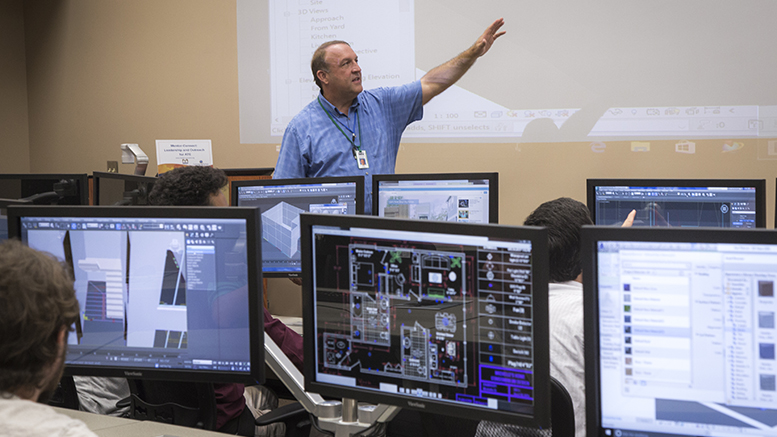Like many industries, the computing and information technology industry is expecting a significant influx of new jobs over the next few years, and it is turning to community colleges to help develop pipelines for entry-level jobs and advanced degrees.
But a new report from the Association of Computing Machinery (ACM) says that pathways between community college computing programs and those at four-year institutions need work. Too few students earning computing-related degrees at two-year colleges transfer to four-year programs to earn a baccalaureate, which would open access to a new range of jobs and increase earning potential, the report says.
Associate-degree holders comprise about 10 percent of workers in computing fields, while bachelor’s-degree earners make up about 43 percent, according to ACM. Entry-level positions in the industry for those with an associate degree or equivalent have a median annual wage of almost $68,000.
“There is tremendous opportunity here,” says Jeffrey Forbes, chair of ACM’s education policy committee and professor at Duke University. “Especially for an industry looking to add more diversity to its workforce, community colleges are an excellent source for recruitment.”
Expanding the pipeline
ACM found that current practices at many four-year colleges and universities impede two-year students from continuing toward a higher degree. Compared to other STEM fields, 1.4 percent of transfer students who entered a community college in 2007 eventually earned a four-year computer science (CS) degree, compared to 21.2 percent earning another four-year STEM degree, the report says. One reason for the gap is that most CS programs at community colleges are considered “technician,” and are designed for certification and not for transfer to a four-year program the way other science and engineering STEM programs are.
In its report, ACM provides recommendations and case studies where two- and four-year institutions have partnered to overcome barriers to successful transfers. For example, in New Jersey, CS enrollment at Keane University was down a decade ago to near zero due, in part, to a decline in transfer students. In fact, CS and information technology (IT) transfer students traditionally comprised half of all CS and IT major graduates at the university.
Keane increased it partnership efforts with several community colleges in the state, focusing on better transfer and articulation agreements, faculty and student dialogue, and student retention for transfer students. As a result, transfer students again comprise half of students in the program.
Structures for success
ACM found common elements of successful transfer efforts at CS pathway initiatives it studied in California, Hawaii, Kentucky, New Jersey and Oregon. Among them are clear articulation and transfer agreements and policies. “When institutions can agree on courses and degrees that fulfill requirements at multiple institutions, students are largely protected from having to retake classes or take additional classes to graduate,” the report says.
There is also cross-institutional dialogue and partnerships between faculty and administration. “Communication could take the form of advisory boards between two- and four-year institutions or agreements to meet on a regular basis to discuss methods of reducing transfer pathway barriers,” the report says.
Personalized support can also help smooth the transfer process. This can include providing new transfer students with information about their coursework or student aid, faculty advisors, tutoring and other formal interventions to welcome and integrate transfer students.
In addition, ACM notes the effectiveness of using student cohorts, which is not a traditional approach at four-year institutions. It can be especially helpful to retain underrepresented students in the CS field, it adds. “Cohort programs foster a supportive peer network, teamwork and interactivity,” the report says.

